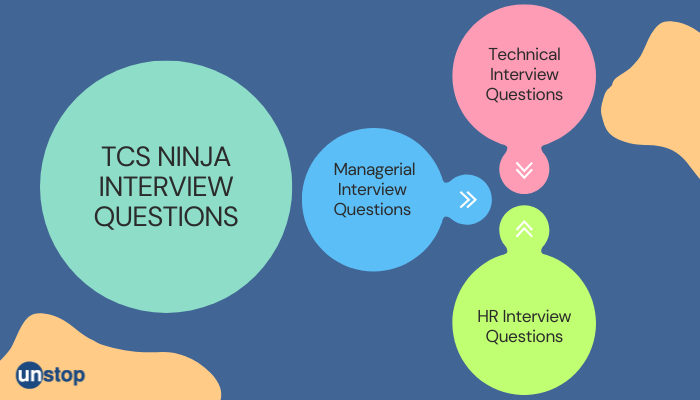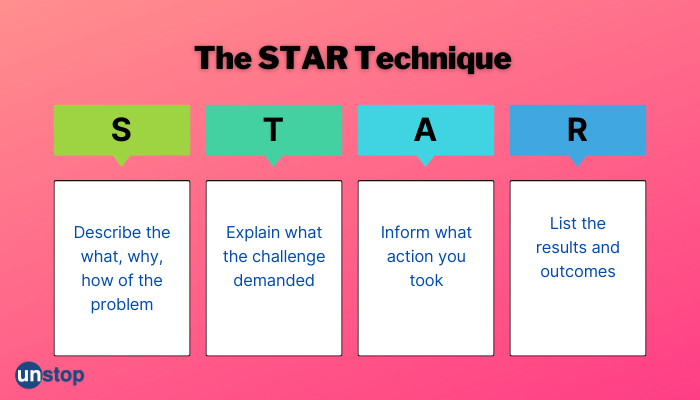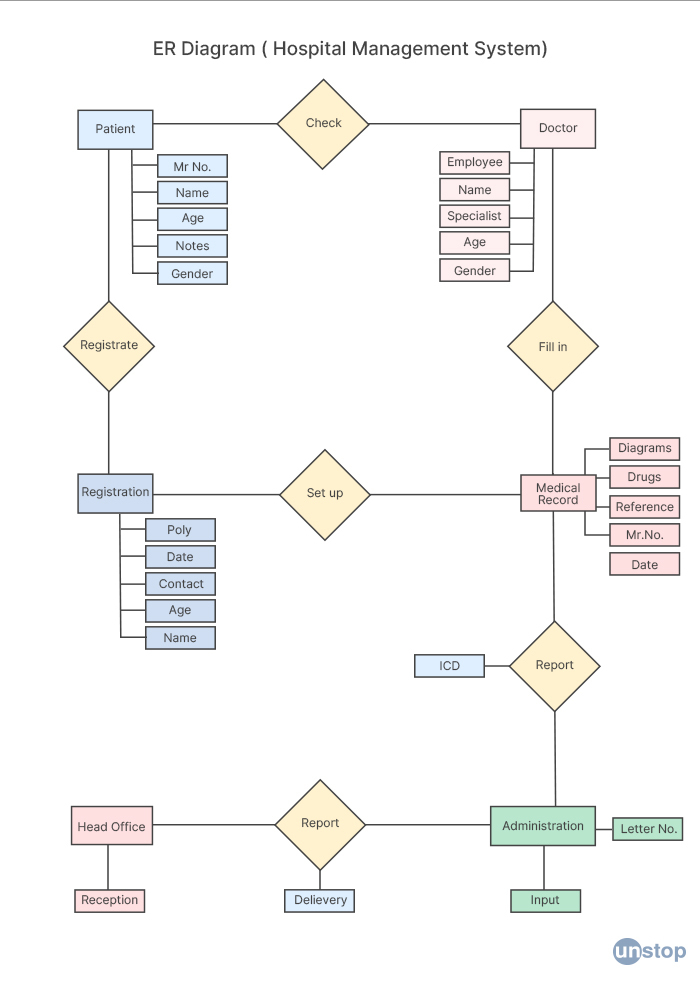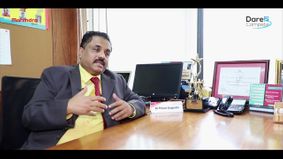- Who are the TCS Ninjas?
- The TCS Ninja Technical Interview Questions
- The TCS Ninja Managerial Interview Questions
- The TCS Ninja HR Interview Questions
- About TCS Ninja
Important TCS Ninja Interview Questions 2023 For Jobseekers

Every year, several people participate in the TCS Ninja hiring process to fulfill their dream of working at one of the most sought-after companies in the country. Having a job at TCS means you are part of a legacy that has contributed to India’s economic growth over decades. Along with this, TCS is also known for supporting the personal growth of its employees through professional growth. The TCS Ninja hiring process promotes the dream of millions of young Indians. Let’s learn more about the TCS Ninja hiring process and look at some TCS Ninja interview questions.
Who are the TCS Ninjas?
The path to becoming a TCS Ninja is long, but not impossible. Among the most difficult hurdles in the path of clearing this recruitment process is answering TCS Ninja interview questions. The candidates have to use tact, display confidence, and showcase self-confidence to pass the TCS Ninja interview question rounds.
The TCS Ninja interview questions have three sections:
- The TCS Ninja technical interview questions
- The TCS Ninja managerial interview questions
- The TCS Ninja HR interview questions

We have provided sample questions and answers for each section to make the interview experience seamless.

The TCS Ninja Technical Interview Questions
Technical questions are fundamental to the TCS Ninja interviews. Aspiring candidates are invited to showcase their knowledge of technical concepts in their discipline. Since TCS hires for various profiles through the TCS Ninja process, this section of the interview allows the company to filter candidates who can be chosen for technical roles.
TCS offers lucrative salaries to employees for technical job roles. Due to this, it is crucial for candidates to brush up on the basic concepts of the subject very well. Unstop has provided a few questions that can be asked as TCS Ninja interview questions for the technical round. You can study these common questions and see what kind of questions are asked in the interviews.
Explain SDLC.
Software Development Life Cycle (SDLC) refers to a diagrammatic representation of the software cycle. SDLC helps provide a structure for the methods that need to be undertaken to complete the process of software development.
For example, if we are making an application for a money transaction, we define the SDLC to determine the currency type to be used, the user interface, the coding-and-testing process, etc.
The process of developing software involves various stages, such as:
- Planning
- Analysis
- Design
- Development
- Testing, Deploying
- Maintainance
What are the most popular SDLS models?
Some of the most important SDLC models are:
- Waterfall model
- V-model
- Iterative model
- Big Bang model
- Spiral model
- Incremental model

What do you mean by the waterfall model?
The waterfall model is one of the most popular SDLC models. It is also known as the linear-sequential model. It divides the process of software development into a set of small phases. In the waterfall model, the next phase of the process begins only after the completion of the first phase. In this way, the sequential flow is maintained and the phases do not overlap.
We can use the waterfall model when we have clear directions on the purpose of the software. The waterfall model allows the developers with careful planning, detailed documentation, and subsequent execution of the process.
The waterfall process is generally divided into six different phases:
- Requirement analysis
- System design
- Implementation
- Testing
- Deployment
- Maintenance

What are OOPs in Java?
Object-Oriented Programming (OOP) refers to methodologies that help in designing a program using objects and classes. In Java, OOPs are used to improve code readability. Along with this, the reusability of a code can be enhanced by defining a program in Java using OOPs. In this way, OOPs simplify the process of software development and maintenance.
List the main components of OOPs in Java.
Some of the main components of OOPs in Java include:
- Class
- Object
- Inheritance
- Polymorphism
- Abstraction
- Encapsulation
What is a linked list?
A linked list is a collection of objects. These objects are called nodes, and they are randomly stored in the memory. The main function of nodes is to handle dynamic data elements. The nodes consist of two fields. The first field stores data, while the second field stores an address that keeps a reference to the next node.
We can use linked lists for performing arithmetic operations through polynomial manipulation. Some of the other functions of linked lists include symbol table creation, memory lists, representation of sparse matrices, and addition of long positive integers.
What are dataframes?
A dataframe refers to a data structure used for arranging and organizing data. The data is organized into a 2-dimensional table of rows and columns. In this way, it resembles a spreadsheet.
We can use dataframes to manipulate tabular data in columns of variables and rows of observations. Along with this, it also supports extracting valuable information from the given data set. Dataframes allow flexibility in storing and working with data, especially in modern data analytics and machine learning applications.
What are pointers and arrays?
|
Arrays |
Pointers |
|
It is a collection of several items of the same type. |
These are used to help programmers create and manipulate dynamic data structures. |
|
The collection of items is stored in contiguous memory locations. |
It stores the memory location or the address of variables. |
|
They are declared as type va_name[size] |
They are declared as type*var_name |
|
They can be initialized at the time of definition. |
They cannot be initialized at definition. |
|
Memory allocation in arrays is sequential. |
Memory allocation in pointers is random. |
|
It is supported in Java. |
It is not supported in Java. |
#include
int main() {
int arr[5] = {1, 2, 3, 4, 5}; // declaring an array
int* ptr = arr; // declaring a pointer and initializing it to point to the first element of the array
printf("Size of array: %d\n", sizeof(arr)); // output the size of the array
printf("Size of pointer: %d\n", sizeof(ptr)); // output the size of the pointer
// output the elements of the array using array notation
printf("Array elements: ");
for(int i=0; i<5; i++) {
printf("%d ", arr[i]);
}
// output the elements of the array using pointer notation
printf("\nPointer elements: ");
for(int i=0; i<5; i++) {
printf("%d ", *(ptr+i));
}
return 0;
}
I2luY2x1ZGUgPHN0ZGlvLmg+CgppbnQgbWFpbigpIHsKICAgaW50IGFycls1XSA9IHsxLCAyLCAzLCA0LCA1fTsgLy8gZGVjbGFyaW5nIGFuIGFycmF5CiAgIGludCogcHRyID0gYXJyOyAvLyBkZWNsYXJpbmcgYSBwb2ludGVyIGFuZCBpbml0aWFsaXppbmcgaXQgdG8gcG9pbnQgdG8gdGhlIGZpcnN0IGVsZW1lbnQgb2YgdGhlIGFycmF5CgogICBwcmludGYoIlNpemUgb2YgYXJyYXk6ICVkXG4iLCBzaXplb2YoYXJyKSk7IC8vIG91dHB1dCB0aGUgc2l6ZSBvZiB0aGUgYXJyYXkKICAgcHJpbnRmKCJTaXplIG9mIHBvaW50ZXI6ICVkXG4iLCBzaXplb2YocHRyKSk7IC8vIG91dHB1dCB0aGUgc2l6ZSBvZiB0aGUgcG9pbnRlcgoKICAgLy8gb3V0cHV0IHRoZSBlbGVtZW50cyBvZiB0aGUgYXJyYXkgdXNpbmcgYXJyYXkgbm90YXRpb24KICAgcHJpbnRmKCJBcnJheSBlbGVtZW50czogIik7CiAgIGZvcihpbnQgaT0wOyBpPDU7IGkrKykgewogICAgICBwcmludGYoIiVkICIsIGFycltpXSk7CiAgIH0KCiAgIC8vIG91dHB1dCB0aGUgZWxlbWVudHMgb2YgdGhlIGFycmF5IHVzaW5nIHBvaW50ZXIgbm90YXRpb24KICAgcHJpbnRmKCJcblBvaW50ZXIgZWxlbWVudHM6ICIpOwogICBmb3IoaW50IGk9MDsgaTw1OyBpKyspIHsKICAgICAgcHJpbnRmKCIlZCAiLCAqKHB0citpKSk7CiAgIH0KCiAgIHJldHVybiAwOwp9
Define a Fibonacci series.
A Fibonacci series is a sequence of integers in which a sequence of two numbers are added to obtain a new number. The first two numbers used in the Fibonacci sequence are 0 and 1.
Explain the major differences between C and Python.
|
C |
Python |
|
It is a procedural programming language. |
It is an object-oriented programming language. |
|
It is a middle-level language. |
It is a high-level language. |
|
It is used as a bridge between machine-level language and high-level language. |
Since it is a high-level language, an interpreter is used for translating Python code into machine language. |
|
It is a compiled programming language. |
It is an interpreted programming language. |
|
It is faster than Python. However, it is less robust than Python. |
It is slower than C. Yet, it is more robust than C. |
|
Memory management is faster. |
Memory management is slower. |
|
C uses .c extension to store codes. |
Python uses .py to store codes. |
|
Print the sum of even numbers between 1 and 100: I2luY2x1ZGUgPHN0ZGlvLmg+CgppbnQgbWFpbigpIHsKICAgaW50IHN1bSA9IDA7CgogICBmb3IoaW50IGk9MTsgaTw9MTAwOyBpKyspIHsKICAgICAgaWYoaSUyID09IDApIHsKICAgICAgICAgc3VtICs9IGk7CiAgICAgIH0KICAgfQoKICAgcHJpbnRmKCJTdW0gb2YgZXZlbiBudW1iZXJzIGJldHdlZW4gMSBhbmQgMTAwOiAlZFxuIiwgc3VtKTsKCiAgIHJldHVybiAwOwp9
|
Print the sum of even numbers between 1 and 100 c3VtID0gMAoKZm9yIGkgaW4gcmFuZ2UoMSwgMTAxKToKICAgaWYgaSAlIDIgPT0gMDoKICAgICAgc3VtICs9IGkKCnByaW50KCJTdW0gb2YgZXZlbiBudW1iZXJzIGJldHdlZW4gMSBhbmQgMTAwOiIsIHN1bSk=
|
Name the different types of inheritance in Java.
The three types of inheritance in Java include:
- single inheritance
- multi-level inheritance
- hierarchical inheritance
- hybrid inheritance
What is single inheritance in Java?
When a class is derived from another class, it is called single inheritance.
What is multi-level inheritance in Java?
In multilevel inheritance, the levels of inheritance increases. In other words, a class is derived from a class, which in turn, is derived from yet another class.
What is hierarchical inheritance in Java?
An hierarchical inheritance in Java refers to the presence of more than one parent class.
What are the properties of an intrinsic semiconductor?
Some of the properties of an intrinsic semiconductor, also known as an i-type semiconductor or an unadopted semiconductor, include:
- Intrinsic semiconductors do not have any dopant species present; hence, they are pure semiconductors.
- The properties of the material determine the number of charges.
- The amount of impurities do not affect the number of charges.
- An intrinsic semiconductor has an equal amount of excited electrons and a number of holes. It is represented as n=p.
- The electrical conduction is low, as it is determined by temperature.
What is a circular linked list?
In a circular linked list, all nodes are connected in such a way that they form a circle. In this way, the first element of the list is connected to the last element of the list. However, the circular linked list is empty if the beginning point equals Null. There are different kinds of circular linked lists, such as circular singly linked lists and circular doubly linked lists.
Circular linked lists are useful for running applications that require the entire list to be accessed in a loop. A circular list can also be used for the Round Robin time-sharing method, in which operating systems share time with different users. One of the most common uses of a circular linked list is in multiplayer games to make switching between players easy. Other places where a circular linked list is used include audio streaming, visual streaming, and circular escalators.
Some of other topics covered in the TCS technical interview include:
There are more topics from which TCS Ninja technical interview questions can be asked. These are: linear data structures, memory management, network traffic, IP network, compile time, parent class, Database Management System, address space, decryption key, Java Virtual machine, Java Swing, Java development kit, class cylinder, space complexity, statistical models, loop flag, outer loop, flag variable, and boolean variable.
Find out more about TCS interview questions: Top 50+ TCS Interview Questions And Answers (Bookmark Them!)
The TCS Ninja Managerial Interview Questions
Students are also asked managerial questions in the TCS Ninja interview. This part of the interview is organized to see whether the candidates are capable of connecting theoretical concepts with real-world problems. Hence, the candidates are advised to talk about their previous work experience and the projects they have worked on earlier. It will shed light on their ability to put it into practice.
What programming languages are you familiar with?
You should not get overwhelmed here and list only those programming languages that you know very well. The interviewer will ask you follow-up questions about the languages you list, so list only the languages you can work with.
In your answer, you can say: "I have advanced-level knowledge of Python. In the third year of our college career, we created a website for an NGO. We chose Python for the task because it helps in sending and receiving data from the servers. Python can also be used for URL routing and providing greater security. Along with this, I am also interested in the stock market. Python is useful for keeping track of stock market trends."
Why are different SDLS models used in software development?
Each process of software development is unique and requires different models to be used. For instance, some software has to be developed in a short period of time. In such circumstances, the RAD model is used. On the other hand, sometimes the developer has to start from scratch and begin with identifying the purpose and intent of the software. Here, the Prototype model helps in designing software which allows the developer to create a prototype and make subsequent modifications to the previously-made prototype.
Tell us about the projects you have worked on so far.
Hiring managers ask this question to assess your working style. The answer to this question will also highlight your experience working with others, your ability to respond to challenges, and your ability to come up with plans. To answer this question, you can use the STAR technique, in which you describe a situation, explain the challenges, and talk about the steps you took to solve the problem.
You can organize the answer in the following points, using the STAR technique:
- Name the project(s) on which you worked.
- Describe your role and responsibilities in the project.
- Describe the outcome of the project.

A sample answer can be like this: "I worked on software used by HR for a talent management company. The software that the company was using was time-consuming and had several bugs. To solve this, we were responsible for developing new software that would make handling payroll, time tracking, and hiring easier and more accessible. I was responsible for the coding, and I used Java to develop the new project."
Tip:
- Enumerate your achievements in quantifiable terms.
- Be concise and do not lose focus on the problem. You should list the solutions as well.
How do you fix errors and ensure quality?
If you are applying for a software developer role, it is one of the most important aspects of the job. To answer this question successfully, explain how you would identify and diagnose the error. Along with this, you should highlight different methods you have used in the past to correct errors.
A sample answer to this question can be like this: "I use code methods for diagnosing errors. It is among the most frequent methods used by most programmers. I used this method to find errors in a music application. When I checked the coding of the application, I found that there was a logical error, which was resulting in incorrect output. I corrected the coding to rectify the error. After this, I checked the functionality of the application by using Dynamic Testing."
The interviewer may also ask you a few questions where you are asked to write a small code, explain the process, or make a diagram.
If you were to establish a connection between the MySQL database and the Java program, how would you do it?
The connectivity between a Java program and MySQL database can be established by following these steps:
- Download and install the MySQL Connector/J JDBC driver from the MySQL website.
- Add the JDBC driver to your project's classpath.
- Use the DriverManager.getConnection() method to establish a connection to the database.
import java.sql.*;
public class MySQLJDBCExample {
public static void main(String[] args) {
// JDBC driver name and database URL
String JDBC_DRIVER = "com.mysql.jdbc.Driver";
String DB_URL = "jdbc:mysql://localhost/mydatabase";
// Database credentials
String USER = "root";
String PASS = "password";
Connection conn = null;
Statement stmt = null;
try {
// Register JDBC driver
Class.forName(JDBC_DRIVER);
// Open a connection
System.out.println("Connecting to database...");
conn = DriverManager.getConnection(DB_URL, USER, PASS);
// Execute a query
System.out.println("Creating statement...");
stmt = conn.createStatement();
String sql;
sql = "SELECT id, name, age FROM customers";
ResultSet rs = stmt.executeQuery(sql);
// Extract data from result set
aW1wb3J0IGphdmEuc3FsLio7CgpwdWJsaWMgY2xhc3MgTXlTUUxKREJDRXhhbXBsZSB7CgogICBwdWJsaWMgc3RhdGljIHZvaWQgbWFpbihTdHJpbmdbXSBhcmdzKSB7CiAgICAgIC8vIEpEQkMgZHJpdmVyIG5hbWUgYW5kIGRhdGFiYXNlIFVSTAogICAgICBTdHJpbmcgSkRCQ19EUklWRVIgPSAiY29tLm15c3FsLmpkYmMuRHJpdmVyIjsKICAgICAgU3RyaW5nIERCX1VSTCA9ICJqZGJjOm15c3FsOi8vbG9jYWxob3N0L215ZGF0YWJhc2UiOwoKICAgICAgLy8gRGF0YWJhc2UgY3JlZGVudGlhbHMKICAgICAgU3RyaW5nIFVTRVIgPSAicm9vdCI7CiAgICAgIFN0cmluZyBQQVNTID0gInBhc3N3b3JkIjsKCiAgICAgIENvbm5lY3Rpb24gY29ubiA9IG51bGw7CiAgICAgIFN0YXRlbWVudCBzdG10ID0gbnVsbDsKCiAgICAgIHRyeSB7CiAgICAgICAgIC8vIFJlZ2lzdGVyIEpEQkMgZHJpdmVyCiAgICAgICAgIENsYXNzLmZvck5hbWUoSkRCQ19EUklWRVIpOwoKICAgICAgICAgLy8gT3BlbiBhIGNvbm5lY3Rpb24KICAgICAgICAgU3lzdGVtLm91dC5wcmludGxuKCJDb25uZWN0aW5nIHRvIGRhdGFiYXNlLi4uIik7CiAgICAgICAgIGNvbm4gPSBEcml2ZXJNYW5hZ2VyLmdldENvbm5lY3Rpb24oREJfVVJMLCBVU0VSLCBQQVNTKTsKCiAgICAgICAgIC8vIEV4ZWN1dGUgYSBxdWVyeQogICAgICAgICBTeXN0ZW0ub3V0LnByaW50bG4oIkNyZWF0aW5nIHN0YXRlbWVudC4uLiIpOwogICAgICAgICBzdG10ID0gY29ubi5jcmVhdGVTdGF0ZW1lbnQoKTsKICAgICAgICAgU3RyaW5nIHNxbDsKICAgICAgICAgc3FsID0gIlNFTEVDVCBpZCwgbmFtZSwgYWdlIEZST00gY3VzdG9tZXJzIjsKICAgICAgICAgUmVzdWx0U2V0IHJzID0gc3RtdC5leGVjdXRlUXVlcnkoc3FsKTsKCiAgICAgICAgIC8vIEV4dHJhY3QgZGF0YSBmcm9tIHJlc3VsdCBzZXQK
Can you draw an Entity Relationship (ER) diagram and explain it briefly?
In simple language, an Entity Relationship (ER) diagram is used for depicting the relationship between different objects and entities. In this way, ER diagrams describe how different entities are associated with one another and how they influence each other.
The following is an ER diagram of hospital management:

Can you tell us about a Spanning Tree and for what purpose it is used?
A spanning tree is referred to as a subgraph of an undirected connected graph. A spanning tree includes the vertices in the subgraph and the minimum number of edges that can connect these vertices. In this way, it prevents the formation of a loop or cycle.
Some of the major properties of a spanning tree are:
- There are n^(n-2) number of spanning trees in a graph with n vertices.
- All vertices of a graph are equivalent.
- Spanning cannot be formed on disconnected graphs. They can only be formed on connected graphs.
- There are no loops or cycles.
Apart from these topics, aspiring candidates should also cover these topics: Java byte-code execution, memory leakage, database schema, database transaction, method overloading, dynamic slice, memory management module, network protection, private network, base class, etc.
There can also be questions from different developer tools, abstract machine, non-contagious memory locations, network security firewalls, function volume, sequential data structure, and stack data structure.
Remember, you should connect these topics with real-world example!
The TCS Ninja HR Interview Questions
The TCS Ninja interview questions also have HR questions. In this section, the HR manager assesses the personality of the candidate. They thoroughly go through the CVs of the candidates. The HR seeks to examine if the details given in the CV are true. For this, they ask the candidate about the education and work experience details mentioned in the CV.
This section of the TCS Ninja interview is easy. The HR department can ask questions about the company. It can be about your desire to join the company or how you adjust to the new company culture. These types of questions can also pertain to academic and non-academic experiences.
Now let’s go through some TCS Ninja interview questions that are asked during the HR round.
Why do you want to join TCS?
It is one of the most common HR questions asked in the TCS Ninja interview. Here, HR seeks to know whether you are motivated to join the company. Moreover, your answer to this basic question will highlight if you have researched the company well enough.
You can talk about some positive points about the company and emphasize how they inspire you to join TCS.
- The company has an old legacy of serving the country for several years. It will be an honor to join the company.
- TCS is a multinational company, with its operations spread across more than 150 countries. In this way, it provides wide exposure to the employees.
- TCS provides job opportunities to candidates with different educational qualifications and work experience. It makes it one of the most versatile companies in the industry, where people with different backgrounds can work and grow professionally.
- The company has a good employee retention rate, which is due to the work-life balance it offers. It will help young professionals who are seeking both professional and personal growth.
Know more about TCS here.
Are you ready to relocate? or Are you comfortable if you are posted away from your home city?
TCS hires for different offices across India through the Ninja hiring process. Along with this, the candidates are also asked if they are comfortable with a night shift. Thus, candidates can expect this question quite often.
You can answer this question in two ways:
If you are willing to relocate, you can say, "I am willing to relocate as it will allow me to immerse myself in a different culture. Relocating would allow me to meet new people, learn new skills, and gain more knowledge. I trust that the organization will help me in the process."
If you are not in favor of relocating, you can say, "Relocating is not possible for me because [state the reason]."
Some of the reasons could be:
- Family obligations
- Health issues
- Financial reasons
Tell me about your strengths and weaknesses.
In this question, HR aims to know how you see yourself. While answering this question, you should display positivity regarding your strengths. At the same time, you should inform others about your weaknesses in such a way that they do not present them in a negative light. Talk about the weaknesses you can overcome and list the steps you are taking.
A sample answer to this question can be like this: "My biggest strength is that I learn very quickly. In the last three years, I have mastered the Java programming language. However, I consider public speaking to be my weakness. I have been trying to overcome this weakness by participating in debate competitions."
How would you react if your project’s deadline was pushed back?
By asking this question, HR seeks to understand how you react to difficult situations.
You must answer this question with tact. You can probably say, "If there is a change in the deadline for a project, I would like to ascertain the reason first. I would request that my seniors inform me why the deadline was changed. It would give me some perspective. Moreover, it would offer me insights as to how I can achieve the goal within the required time. It will also prepare me for future projects where such things could occur."
How would you handle criticism at work?
This question aims to see how good you are at constructive criticism. Your answer should highlight how you use criticism to improve your performance.
A sample answer to this question can be like this: "I think constructive criticism is inevitable for personal growth. It allows you to look into your shortcomings and correct them. I have benefited greatly from constructive criticism in the past several times. For instance, my supervisor in my last job told me I was missing deadlines. To remedy this, I started using Google Calendar to remember all the important dates."
The candidates should keep certain points in check to impress HR. Unstop has prepared a list of some important tips to ace the TCS HR interview.
- Go through your CV well. It will provide you with some confidence.
- Prepare, in advance, some points about the courses and work experience you mention in your CV. You should be ready with quick answers when HR asks questions about them.
- Be confident throughout the interview.
- Listen to the questions carefully.
- Do not rush to answer the questions; pause and frame a well-structured answer.
For more TCS HR interview questions, read: Top 50+ TCS HR Interview Questions And Answers 2023
About TCS Ninja
The TCS Ninja recruitment process is conducted to hire candidates for different job roles at the company. The company organizes a nationwide hiring drive and recruits competitive candidates for different departments, such as software engineering, software development, maintenance, support, etc.
The TCS Ninja recruitment process broadly includes the National Qualifying Test (NQT) and the interviews. The NQT is an aptitude test in which questions in numeracy, logical reasoning and verbal reasoning are asked. The aptitude questions section carry negative marking. The aptitude exam takes place like an actual exam where candidates are given limited time to finish it.
After this, the candidates are invited for interviews. The successful candidates have to clear both to get the job at the company.
Now that you know what you need to do to become a TCS Ninja, start your preparation with Unstop. We bring the stories of candidates and offer you new insights. Check out more preparation material at Unstop to make your TCS journey smooth!
You may also like to read:
An avid reader and an ambitious traveller, I like to curate stories. The instinctive desire to explore the unchartered territories of the unknown and unseen inspires me to find wonder in the cosmos. I find solace in the embrace of nature, and hope to create an environment of peace wherever I go.
Login to continue reading
And access exclusive content, personalized recommendations, and career-boosting opportunities.
Subscribe
to our newsletter
















Comments
Add comment